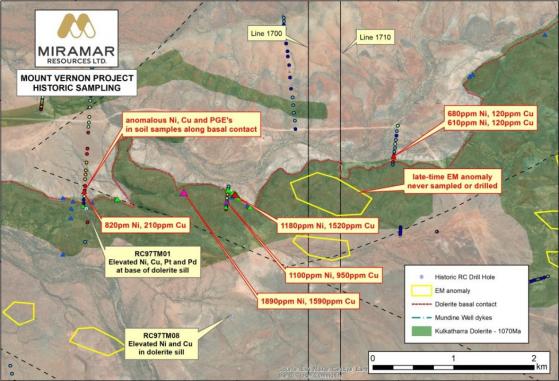Miramar Resources Ltd (ASX:M2R) has connected the dots at the Mount Vernon Project, using a combination of historical sampling results and a recent electromagnetic (EM) survey to identify high-potential targets prospective for nickel, copper and platinum group elements (PGE).
The new targets lie along a 26-kilometre-long basal contact that runs through the project in the Gascoyne region of WA, with several dolerite dykes crosscutting older geology.
Previous exploration outlined several multi-element anomalies over several kilometres of the basal contact, although a large portion of it has never been sampled or drilled.
Those anomalies have now been further proved-up with the results of the EM survey, which the company believes represents an accumulation of nickel-copper-PGE sulphides.
Highly prospective region
“The Kulkatharra Dolerite sills present at Mount Vernon are the same age as the Giles Complex which hosts the large Nebo and Babel nickel-copper deposits in the West Musgraves,” Miramar Resources executive chair Allan Kelly said.
“There are multiple significant historical nickel, copper and PGE rock chip and soil results over a significant strike length along the base of one of these dolerite sills and a number of late-time EM anomalies that could be related to nickel sulphide mineralisation.”
Eastern part of Mount Vernon Project showing historic soil and rock chip results
Miramar intends to soon put boots on the ground for a reconnaissance field trip and sampling program, to take place in June, which will provide further information on the mineralisation at Mount Vernon.
Read more on Proactive Investors AU
